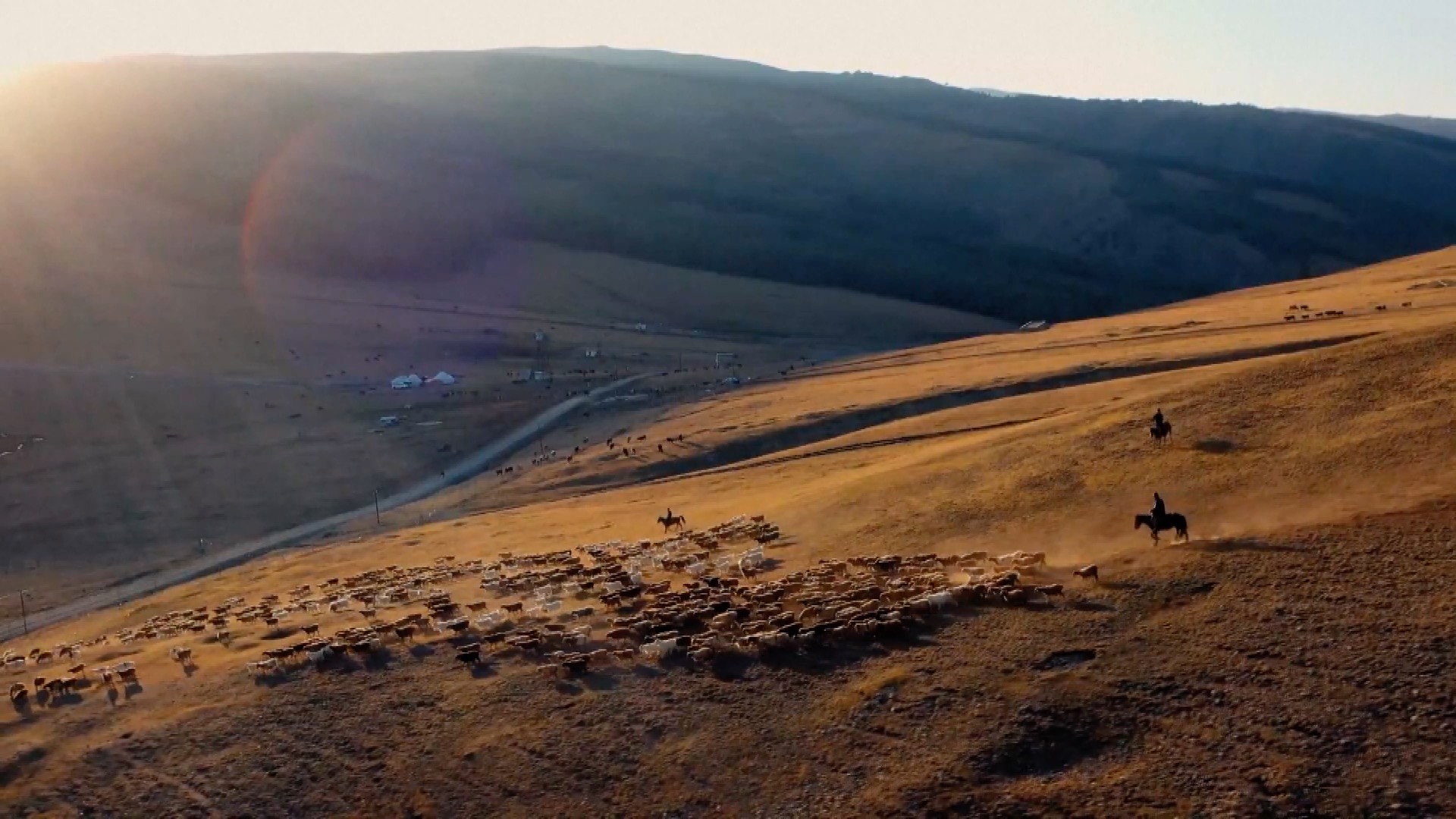00:43

When the seasons change, herdsmen in Xinjiang's Altay Prefecture start to fulfill their promise to nature, relocating their herds to autumn pastures. The view of more than 300,000 livestock transferring with their keepers is as stunning as Africa's Great Migration.
As most of the nomads live in mountainous areas, their seasonal move is mainly driven by the vertical distribution of climate. They use different routes, ranging from dozens to hundreds of kilometers. During the spring, they stay in the warm dry grasslands where sunlight abounds. When June arrives, they move toward higher altitudes, where the summer pastures have forests and meadows. The temperature here is cooler and food is abundant, providing an ideal environment for the livestock to gain weight.
When autumn arrives, the temperature drops very quickly and even brings snowfall in the high altitude. The herdsmen begin their massive migration from the end of September to the beginning of October to the lower valleys and plains, where they will stay until next spring.
Their transfer of livestock is not only a way to comply with the laws of nature, but also to avoid overgrazing. As every stage of the herd transfer is a "great migration" in itself, they must overcome many challenges from nature and diseases. To ensure the safety of both locals and livestock, police are dispatched to help the herdsmen by checking roads and weather, setting up camps and guiding the sheep and cows.
(Cover image is a screenshot)
(If you want to contribute and have specific expertise, please contact us at nature@cgtn.com.)

